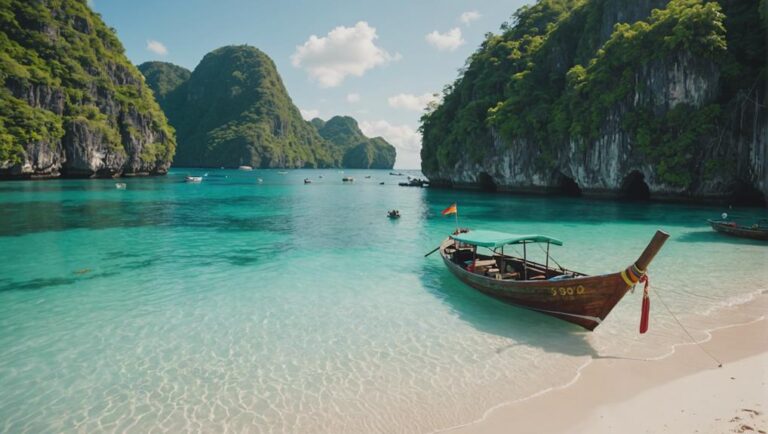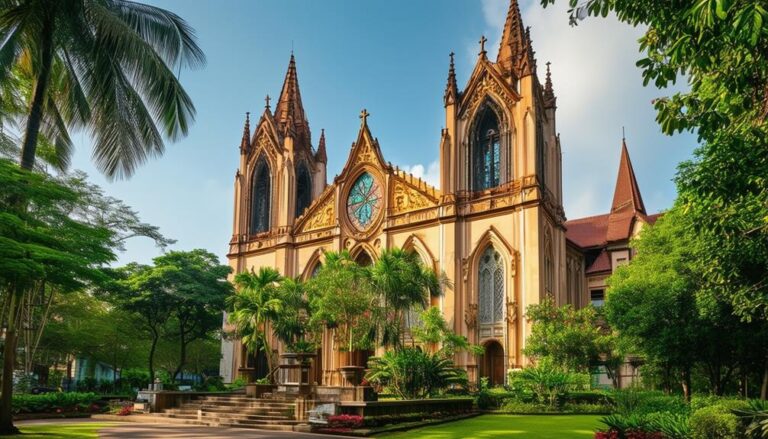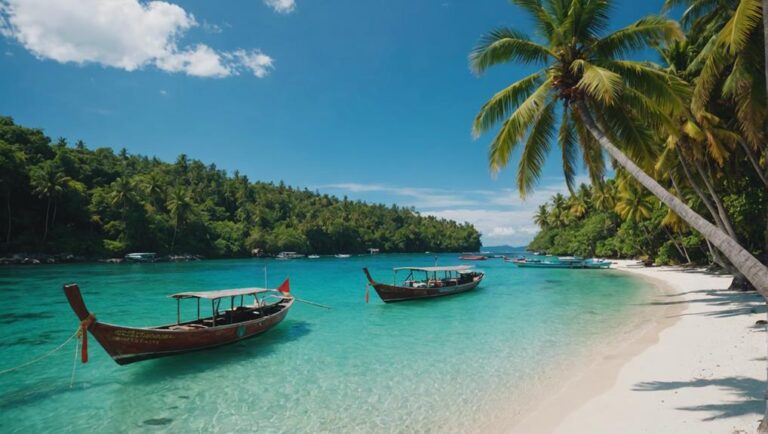Discover Fort Santiago Philippines

You're about to uncover the secrets of one of the Philippines' most historic landmarks, Fort Santiago, which has stood the test of time since its establishment in 1590. This ancient fort has witnessed key events in Philippine history, reflecting Spanish colonization and military garrison significance. As you explore the fort's architecture, you'll notice Spanish influence with ornate stone carvings and baroque details. You'll also discover the stories of national heroes like José Rizal, who fought for Philippine independence. As you venture beyond the fort's walls, you'll find a world of cultural attractions, street food, and hidden gems waiting to be discovered – and there's still so much more to explore.
History of Fort Santiago
Established in 1590 by Spanish conquistador Gómez Pérez Dasmariñas, Fort Santiago has stood the test of time, witnessing key events in Philippine history.
As you explore the fort, you'll uncover the rich history of Spanish Colonization, which had a profound impact on the country. You'll learn how Fort Santiago served as a Military Garrison, protecting the Spanish Empire's interests in the region.
The fort played a significant role in the Philippine Revolution, with many national heroes imprisoned and executed within its walls. You'll sense the Historical Significance of this ancient structure, which has survived wars, natural disasters, and the test of time.
As you walk through the fort's ancient structures, you'll get a glimpse into the country's complex past. The fort's historical importance is undeniable, and you'll be fascinated by the stories it holds.
Exploring the Fort's Architecture
As you venture beyond the fort's historical significance, you're drawn to the imposing stone walls and majestic architecture that reflect the fusion of Spanish, American, and Filipino influences. The fort's design is a testament to the cultural exchange that occurred during the colonial period.
Here are some architectural features you should look out for:
| Architectural Feature | Description |
|---|---|
| Spanish Influence | Ornate stone carvings and baroque details adorn the fort's façade |
| Stone Walls | Thick, sturdy walls made of volcanic rock and coral stone provide a sense of security |
| Archway Designs | Grand archways with Moorish elements welcome you to the fort's inner sanctum |
| Battlement Features | Crenellated walls and watchtowers give a glimpse into the fort's military past |
| Moorish Elements | Intricate geometric patterns and ornate plasterwork add an air of elegance |
As you explore the fort, you'll notice how these different architectural styles blend seamlessly together, creating a unique and fascinating structure that's both functional and beautiful. Take your time to appreciate the intricate details and imagine the stories these walls could tell.
National Heroes of the Past
You'll discover that Fort Santiago has played a significant role in the lives of several national heroes who fought for the country's independence and freedom.
As you walk through the fort's historic walls, you'll uncover heroic tales of brave men and women who risked everything for the Philippines.
You'll learn about forgotten figures like José Rizal, the national hero who was imprisoned within the fort's walls before his execution in 1896. His story, along with many others, defines patriotism and showcases the selfless sacrifices made for the country's freedom.
The fort's museum showcases the courageous legacies of these heroes, giving you a deeper understanding of their struggles and triumphs. You'll gain a new appreciation for the country's history and the brave individuals who shaped it.
As you explore Fort Santiago, you'll realize that the fort is more than just a historic structure – it's a symbol of the nation's fight for independence and a tribute to the bravery of its people.
Tourist Information and Tips
To start with, plan your visit during the morning or late afternoon to avoid the scorching heat.
Wear comfortable shoes and clothes, as you'll be doing a lot of walking.
Don't forget to pack essentials like sunscreen, a hat, and water to stay hydrated.
For a more in-depth experience, consider hiring a tour guide who can share valuable insights about the fort's history and significance.
Take necessary safety precautions, such as keeping valuables secure and being mindful of your surroundings.
The entrance fee is relatively affordable, but you can save more by purchasing a combo ticket that includes other nearby attractions.
Lastly, be respectful of the fort's historical significance and follow any rules or regulations during your visit.
Beyond the Fort's Walls
Beyond the historic walls of Fort Santiago lies a treasure trove of cultural attractions, waiting to be explored in the surrounding Intramuros district. As you journey out, you'll discover a world of flavors at the street food stalls, where you can indulge in local delicacies like adobo and sinigang. Be sure to visit the local markets, like the San Agustin Market, where you can find unique souvenirs and interact with friendly vendors.
Explore the vibrant nightlife scene in nearby Malate, where bars, clubs, and lounges come alive after dark.
Embark on an urban discovery adventure, wandering through the cobblestone streets and discovering hidden gems, like the Plaza Roma and the Bahay Tsinoy Museum.
Take a romantic River Cruise along the Pasig River, offering a unique perspective on the city's skyline and historic landmarks.
With so much to see and experience, you'll want to spend more than a day exploring the area. Whether you're a foodie, a history buff, or an adventure-seeker, there's something for everyone beyond the fort's walls.
What Can I Expect to See and Do at Fort Santiago Philippines?
At Fort Santiago Philippines, visitors can expect to see well-preserved historical artifacts and landmarks from the country’s colonial past. The site offers a glimpse into the Philippines’ rich history, with opportunities to explore the sprawling grounds, learn about its significance, and immerse oneself in the culture of the region.
Frequently Asked Questions
Are There Any Restaurants or Cafes Inside Fort Santiago?
You'll find limited food options inside Fort Santiago, but nearby, you'll enjoy a delightful dining experience at cafes and restaurants with great menu variety, earning positive restaurant reviews, making up for the lack of options within the fort.
Can I Bring My Pet Inside the Fort Premises?
You're wondering if you can bring your furry friend inside the fort premises. According to the Pet Policy, there are Animal Restrictions, but Service Animals and Emotional Support animals are allowed; just remember to practice good Pet Etiquette.
Are There Lockers or Storage Areas for Visitors' Belongings?
You'll be happy to know that you can store your belongings safely while exploring. They offer bag checks, locker rentals for a fee, and secure storage options, so you don't need to worry about bag restrictions.
Is Fort Santiago Wheelchair and Stroller Accessible?
You'll find Fort Santiago to be quite accessible, with ramp inclusions, wide paths, and gentle slopes making it easy to navigate. Clear signage and thoughtful accessibility features guarantee a smooth visit for you and your little ones.
Can I Take a Taxi or Ride-Hail Inside the Fort Complex?
You can't take a taxi or ride-hail directly inside Fort Santiago's complex due to taxi restrictions, but you can get dropped off at the Fort Entrances and navigate the complex on foot; vehicle permits are required for private cars.
Conclusion
As you walk out of Fort Santiago, you're left with a deeper understanding of the Philippines' rich history and the bravery of its national heroes.
You've explored the fort's impressive architecture, learned about the struggles of the past, and maybe even felt a sense of nostalgia.
Now, take the lessons and memories with you, and let them inspire you to explore more of what the Philippines has to offer.






